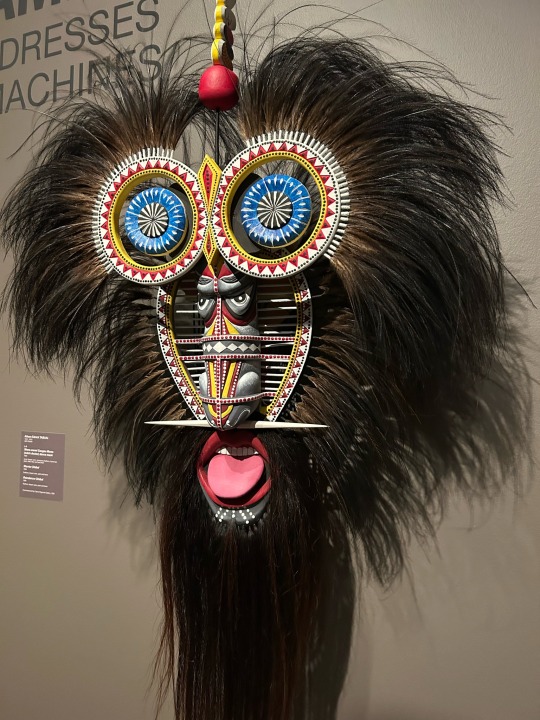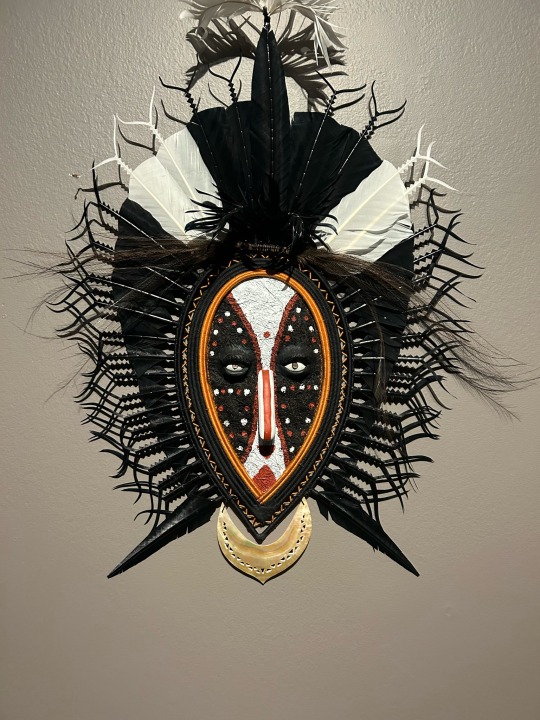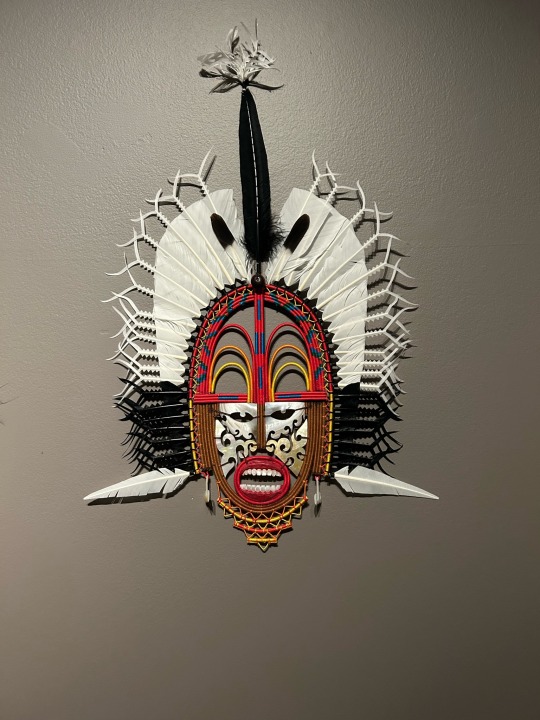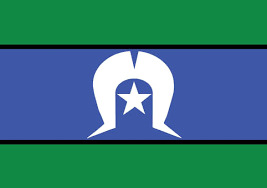#torres strait islander
Explore tagged Tumblr posts
Text
Calling for Aboriginals and Torres Strait Islanders who have faced injustice in the justice system and/or police brutality.
This is a difficult topic but a very important one that NEEDS to be discussed. Please share this around, the more voices we raise, the better.
53 notes
·
View notes
Note
What do the hearts represent in your bio? The colors remind of the Belgium flag, is that it :o?
No actually! They are the colours of the Aboriginal flag.
I am not an Indigenous Australian myself but I stand in solidarity with Indigenous Australians and think it is very important to acknowledge I live on stolen land.

Australia Always Was and Always Will Be Aboriginal and Torres Strait Islander land.
Unfortunately, there is no Aboriginal flag emoji which is awful. There is also no Torres Strait Islander flag.

34 notes
·
View notes
Text



australian aboriginal - cherokee - torres strait islander
[EMOJI REQS ARE OPEN]
#pro endogenic#endogenic#system#custom emojis#custom emoji#emoji blog#cute emoji#emoji#discord emojis#discord emote#discord emoji#emote blog#requests open#reqs open#flags#flag#aboriginal#australian#australian aboriginal#cherokee#native american#torres strait#torres strait islander
9 notes
·
View notes
Text

2 notes
·
View notes
Text






Gamu Zamiyakal: Torres Strait Islander masks and headdresses.
Cairns Art Gallery, Australia.
#gamu zamiyakal#headdress#head dress#mask#masks#Torres strait#Torres strait Islander#First Nations#Australia#Australian#indigenous art#blak australia#Indigenous#cairns#Queensland#fnqld
82 notes
·
View notes
Text


CHRISTINE ANU Stylin' Up + limited edition bonus live disc
6 notes
·
View notes
Text
Gonna love when non Indigenous people will call us savages, cannibals and headhunters (Torres Strait Islanders). Then proceed to like The Predator franchise. Like oh when an Alien does it, it's cool but when we did it, not so cool? Cool, cool, cool. 🤔💀😐
1 note
·
View note
Text

Nornie Bero feature for Broadsheet
#Nornie Bero#Mabu Mabu#Island Echoes#SBS#Torres Strait#torres strait islander#food#cooking#dining#chef#TV#television#interview#Australia
0 notes
Text

Here are some resources for the 26th of January. In such difficult times, solidarity is more important than ever. Take care of yourself and take care of each other.
Support services for those in Australia:
Lifeline 13 11 14
Kids Helpline 1800 55 1800
QLife 1800 184 527 (for Queer Australians)
Support services specific for First Nations people:
13YARN 13 92 76
Yarning Safe ’N’ Strong 1800 959 563
Brother to Brother 1800 435 799 (for Indigenous men)
#Invasion Day#Aboriginal Australia#Torres Strait Islander people#Indigenous Australia#auspol#resources#Australia#Day of Mourning#Survival Day#always was always will be
673 notes
·
View notes
Note
I saw your post in the thread about the Budj Bim creation myth, and you mentioned that you teach Ancient Civilizations and have a week on Australia and the Torres Strait Islands. I was wondering if you have any recorded lectures on this topic that are available anywhere online?
Or do you have any recommendations for freely available resources to learn more?
Hi there,
I'm so glad you're interested in this (and also so sorry it took me this long to answer)! I'm also tagging @four-ravens-in-a-trenchcoat because you sent a very similar ask.
I'm far from the expert, so I'm going to tag @micewithknives and @acearchaeologist who are both Australian archaeologists with far more knowledge than I. The lessons I've developed have been with their expertise as guidance.
I'll start out by linking to a short piece about Budj Bim and its eel traps being designated as a world heritage site and why that's important:
This page talks a little bit more about the eel traps, the creation story, and the Gunditjmara people who live there:
Unfortunately, I don't record my lectures, and sharing them would probably violate some privacy laws. I can, however, share the readings I give my students.
The week is broken into two class periods, and for each session I ask students to read one scholarly piece and one more pop culture one. The readings for the first part are:
Nunn, Patrick. 2018. “Australian Aboriginal Memories of Coastal Drowning.” In The Edge of Memory: Ancient Stories, Oral Tradition and the Post-Glacial World, 63–107. Bloomsbury Sigma. Clarkson, Chris, Ben Marwick, Lynley Wallis, Richard Law Kelaham Fullagar, and Zenobia Jacobs. 2017. “Buried Tools and Pigments Tell a New History of Humans in Australia for 65,000 Years.” The Conversation, July 19, 2017. https://theconversation.com/buried-tools-and-pigments-tell-a-new-history-of-humans-in-australia-for-65-000-years-81021.
and then for the second class:
Taçon, Paul S. C., Rosalie S. Chapple, John Merson, Daniel Ramp, Wayne Brennan, Graham King, and Alandra Tasire. 2010. “Aboriginal Rock Art Depictions of Fauna: What Can They Tell Us about the Natural History of the Greater Blue Mountains World Heritage Area?" https://doi.org/10.7882/FS.2010.008. Smithsonian Magazine. 2019. “A 42,000-Year-Old Man Finally Goes Home,” September 2019. https://www.smithsonianmag.com/history/mungo-man-finally-goes-home-180972835/.
The important part of this unit is that it comes right after we learn about the four classic river valley civilizations (Mesopotamia, the Indus, China, and Egypt). These "Big 4" all fit the description of the article I have them read at the very beginning of the class about the Key Components of Civilizations.
Australia week is about challenging that definition of civilization by examining where it came from, how it was developed, and who it excludes. At the end of the week I have students come up with another definition of Civilization that does not exclude Aboriginal and Torres Strait Islanders, Indigenous groups in North and South America, nomadic groups, etc.
The book (The Edge of Memory) by Patrick Nunn is a good one (for this class we only read the third chapter, but the entire book is worth a read.
Decolonizing Research Indigenous Storywork as Methodology is an edited volume that features perspectives on oral history from Indigenous people all over the world, including Australia.
Cheers, -Reid
156 notes
·
View notes
Text
Skipping ALL things in my queue, and all the asks in my ask box, to tell y'all about THIS that came out a few hours ago. I cannot express how excited I am about this information finally being published.
Its not the first evidence of pottery technologies found in Australia, but the artefacts that have been found at the Lizard Island group in the past havent necessarily been datable. Evidence of pottery in the Torres Strait was also found in the early 2000s, and its been analysed to be evidence of trade with Papua New Guinea (who have an AMAZING history of pottery technology).
To our amazement, around 40cm below the surface we began to find pieces of pottery among the shells in the excavation. We knew this was a big deal. We carefully bagged each piece of pottery and mapped where each sherd came from, and kept digging.
But as of now, there's officially dated evidence for locally made pottery in Australia, of at least 1800 years. Not only outside the Torres Straight, but 300km south. Not only 1800+ years old, but also pre-dating the original known dates for Torres Straight Islands pottery, suggesting the possibility of even earlier pottery technology trade with PNG. AND ITS DECORATED.
Radiocarbon dating of charcoal and shells found close to the pottery shows that it is between 2,950 and 1,815 years old, making it the earliest securely dated pottery ever found in Australia. Analysis of the clays and tempers shows that all of the pottery was likely made on Jiigurru.
The pottery stopped at about 80cm depth, with 82 pieces of pottery in total. Most are very small, with an average length of just 18 millimetres. The pottery assemblage includes rim and neck pieces and some of the pottery is decorated with pigment and incised lines.
#GUYS IM SO EXCITED#IVE BEEN WAITING FOR THIS#archaeology#australia#Aboriginal and Torres Strait Islander peoples#this is literally SO huge#they let a mouse do archaeology?#Indigenous peoples
632 notes
·
View notes
Text
1 note
·
View note
Text
every monster high fancast is just:
Frankie: white woman
Draculaura: white woman
Cleo: white woman
Lagoona: white woman
Abbey: white woman
Ghoulia: white woman
Clawdeen: Zendaya
#my post#what is wrong with y'all#Cleo is Egyptian#she isn't cleopatra so don't try that stupid “but cleopatra's macedonian” cause cleo ain't her#Lagoona is Aboriginal or a Torres Strait Islander#because are you really suggesting the sea also got colonised?#Abbey is DESI (or Chinese)#girl is from the Himalayas#Clawdeen is a dark-skinned woman#that is important to her character#also do y'all not know any other black actresses? seriously?#monster high#monster high fancasts#mh#ghoulia yelps#abbey bominable#clawdeen wolf#lagoona blue#cleo de nile#frankie stein#draculaura
122 notes
·
View notes
Text
For #WorldDugongDay:



Alick Tipoti (Torres Strait: Badhu Island, Kala Lagaw Ya, b.1975)
Kisay Dhangal, 2016
Sculpture, bronze with mother-of-pearl inlay
194 × 202 × 102 cm, 280 kg
Australian National Maritime Museum 00054952
"Inscribed with traditional motifs and pearl shell, Kisay Dhangal reflects the life cycle and feeding patterns of the dhangal (dugong) in the Torres Strait Islands. The dhangal is captured in the position known as San Tidayk, in Kala Lagaw Ya language which marks the moment the mammal flips its tail to dive down and graze on the sea grass beds. A marine dust trail between the tail and figure of the moon emphasize how lunar cycles determine dugong feeding and mating habits."
#Alick Tipoti#animals in art#animal holiday#sculpture#metalwork#bronze#Indigenous art#Australian art#Torres Strait Islander art#contemporary art#Australian National Maritime Museum#dugong#World Dugong Day#marine mammals#Sirenians#ethnozoology
169 notes
·
View notes
Text

for those who don't know: this is the Aboriginal flag.
the black represents the colour of the skin of the people
the red represents the red earth and the spiritual connection to it, as well as the red ochre used in ceremonies
the yellow circle represents the sun, the giver of life

this is the Torres Strait Islander flag, a flag which is just as important, signifying another group of Indigenous australians
the green represents the land, the blue represents the sea
the black lines separating them represents the Torres Strait Islander people
the centre of the flag has a white dhari, a type of headdress
the white star underneath it symbolizes peace, and the 5 points represent the 5 island groups in the Torres Strait
please correct me if you believe any of this information is wrong
#i know only my australian mutuals will be alive right now but i think this might be important for some of us too#im sure yall knew about the Aboriginal flag#but i personally didn't know the meaning of the Torres Strait Islander flag. had to google and read about it#but dw i read like 3 different websites which all seemed to agree on those facts#so i think i got it right#but im sure my qlder followers would know more than me and i would gladly be educated
180 notes
·
View notes
Photo

NAIDOC Week
It’s NAIDOC Week in Australia, a week acknowledging and celebrating Aboriginal and Torres Strait Islander peoples and culture.
If you’d like to learn a bit about Aboriginal and Torres Strait Islander queer history, we’ve put together a few links to get you started.
Peopling the Empty Mirror: The Prospects for Lesbian and Gay Aboriginal History by the Gays and Lesbians Aboriginal Alliance (1994) - an essay reviewing literature on Aboriginal sexuality, and discussing future of Aboriginal queer history
ATSI Rainbow Archive curated by Andrew Farrell - an online archive active from 2014 to 2021, cataloguing links from across the internet referencing queer Aboriginal and Torres Strait Islander experiences.
What do we know about queer Indigenous history? by James Findley (2018) - an article in which Findley speaks to queer Aboriginal and Torres Strait Islander people about their understandings and experiences of queer Indigenous history.
Colouring the Rainbow: Blak Queer and Trans Perspectives edited by Dino Hodge (2015) - an anthology of essays and personal stories by twenty-two First Nations people exploring identity, culture and queerness.
We are far from experts so if you have links to more sources feel free to add them.
#naidoc week#naidoc#aboriginal history#torres strait islander history#atsi history#australia#lgbt#lgbtq#queer#queer histroy
471 notes
·
View notes